Short-lived, yet beautiful and impressive, hollyhocks are one of the easiest flowers you can grow. Not only do they spread rapidly, but they are not high maintenance at all!
This type of flower comes in a wide range of colors: pink, yellow, white, and even crimson.
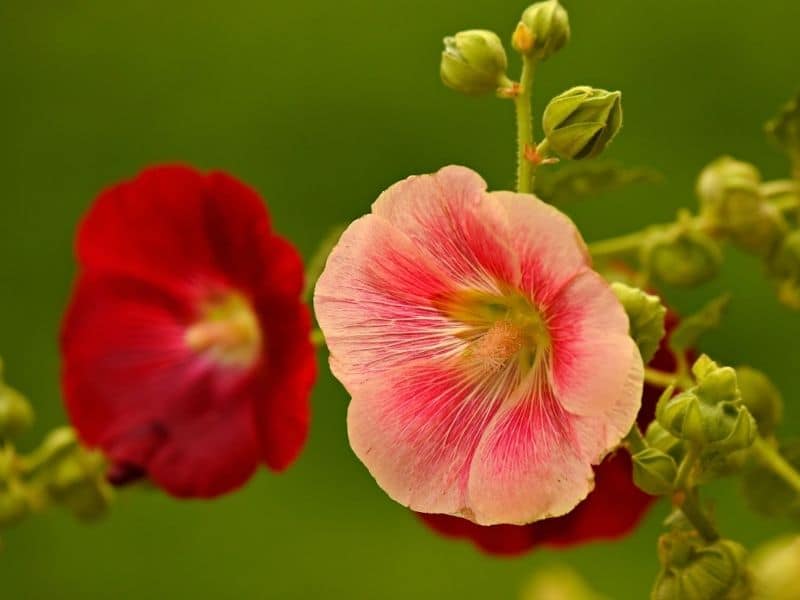
Continue reading this article and discover everything you need to know about growing hollyhocks.
Basic Facts about Hollyhock
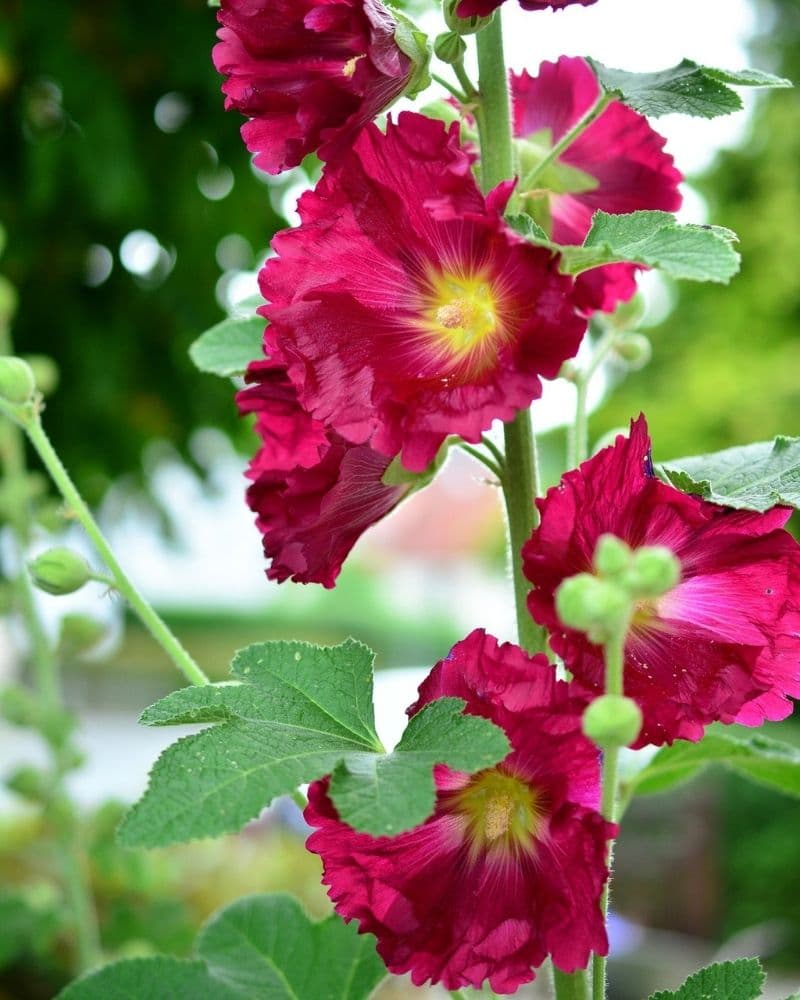
- Hollyhocks are native to the Asian continent, however, nowadays it is perfectly normal to see them being cultivated all over the world!
- Its scientific name is Alcea rosea, and they belong to the Malvaceae family of plants.
- Although most hollyhocks are perennials, albeit the short-lived type, some hollyhocks fall into a biennial category of flowers.
- Hollyhock flowers bloom from late spring to mid-summer, although the exact blooming period can vary depending on factors such as the specific variety of hollyhocks, local climate conditions, and growing environment.
Many gardeners and enthusiasts alike ask themselves how to grow and care for hollyhocks. Follow these tips, and you will grow hollyhocks successfully.
How to Plant Hollyhocks
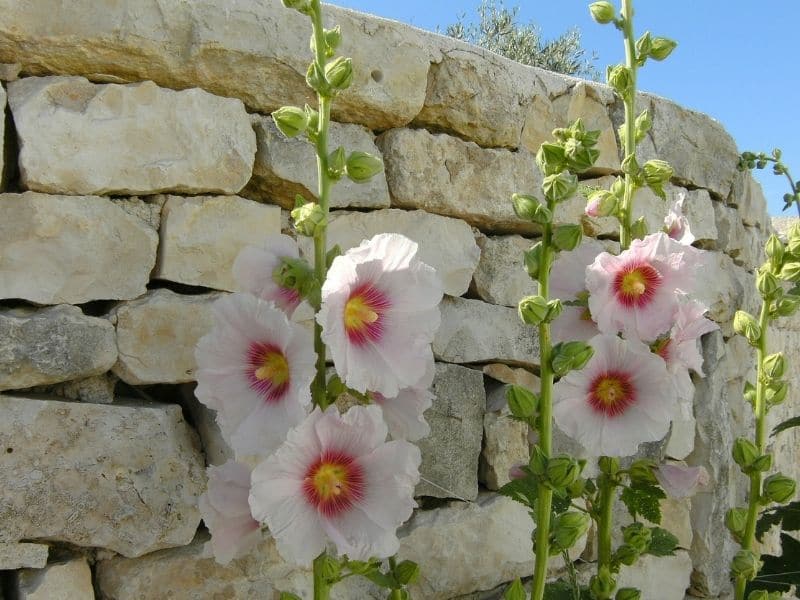
The good news is that hollyhocks are easy to grow flowers. They do have some specific requirements, but if the right growing conditions are met, these flowers will reseed themselves for years to come!
Hollyhocks need moist soil. They can be directly grown outdoors, a week or two before the last frost of the region, or you can start some seedlings at least three weeks before the last frost.
However, if you are following the second way, you should wait a week after the last frost to sow the seedlings outdoors!
All hollyhocks should be at least 2 feet apart from one another; this way they will all grow healthily, especially in zones 3-8.
Propagate Hollyhocks
Hollyhocks are self-seeding; this means that they will release some fertilized seeds into the soil, right before they die. Depending on the variety, some hollyhocks will release the hollyhock seeds during the second year of life, that is why they are called biennial flowers.
On the other hand, other varieties of hollyhocks will only reseed themselves after the third year of life.
Fertilizer and Mulch
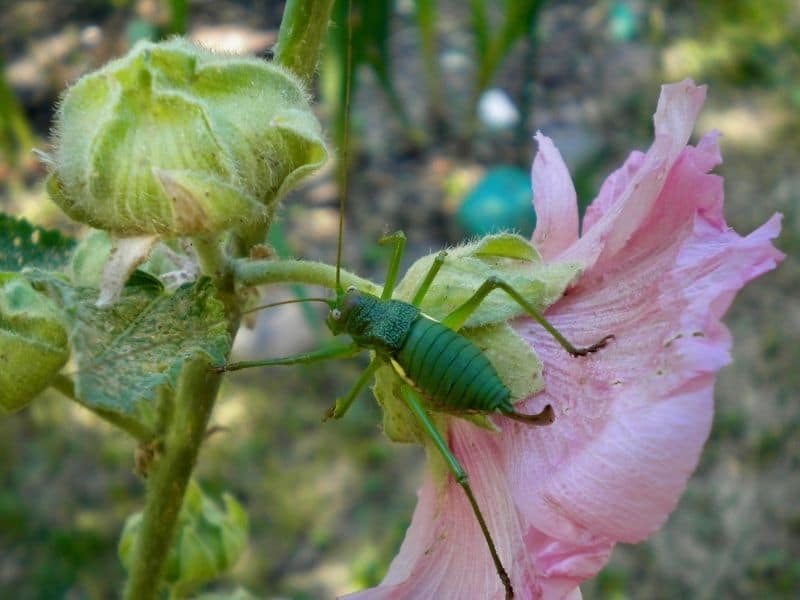
For hollyhock flowers, apply a balanced fertilizer with a higher phosphorus content (the middle number on the fertilizer label) in early spring to promote healthy root development and abundant blooms. Use a slow-release fertilizer or a liquid fertilizer hollyhocks every 4-6 weeks during the growing season.
Apply a layer of organic mulch, such as compost or shredded bark, around the base of hollyhock plants to help retain soil moisture, suppress weeds, and moderate soil temperature. Avoid placing mulch directly against the stems to prevent rot. Replenish mulch as needed to maintain a depth of 2-3 inches throughout the growing season.
Watering Requirements
Hollyhocks need water, but it would be best to avoid overwatering them as this could make them rot.
If you live in an area where there are long periods of drought, then it is advisable to water them every other day, depending on their location.
Light Requirements
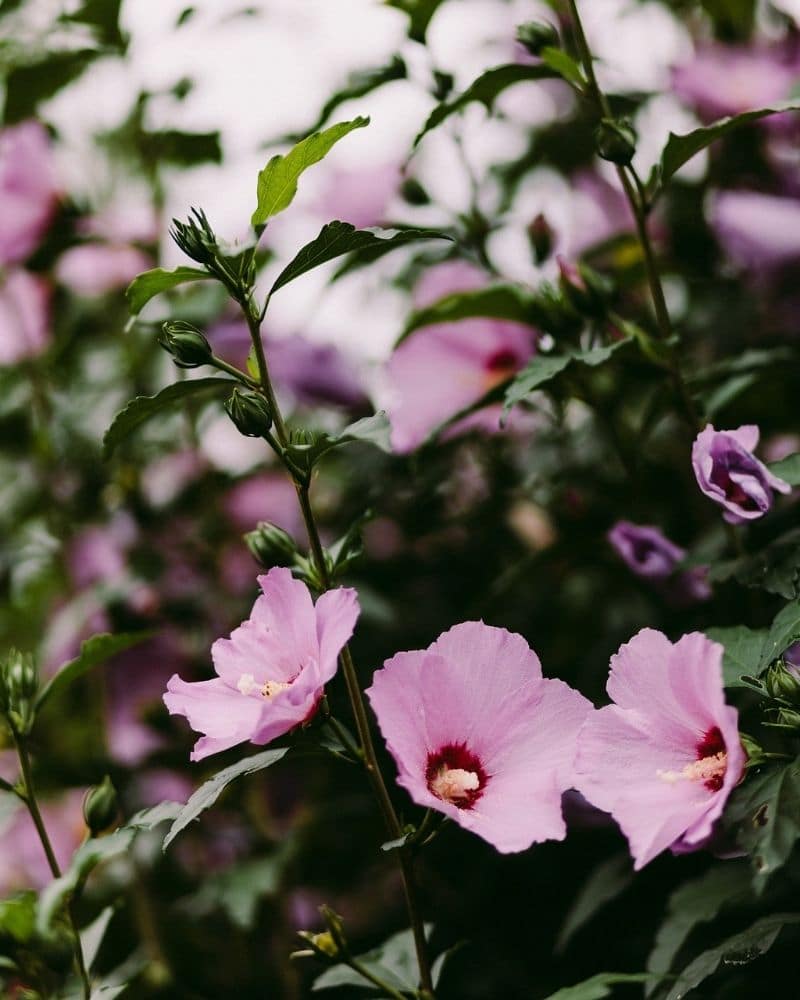
As stated previously, hollyhocks love the sun, full sun! However, the dwarf varieties of this plant should be placed in partial shade.
Many new gardeners will think that their hollyhocks have died because they look brown and dried during their first year. This is a normal behavior of hollyhocks, as they will tend to go like this during that time.
It is advisable to trim these areas and let them on the ground as mulch. Then, during the second and third years, these same hollyhocks will resurface healthier than ever before!
Pruning
Pruning hollyhock flowers is minimal but beneficial. Deadhead spent blooms regularly by removing the entire flower stalks down to the base of the plant to encourage continuous blooming and prevent self-seeding. Trim any diseased or damaged leaves or stems promptly throughout the growing season to maintain plant health and appearance.
In late fall or early spring, cut back hollyhock plants to within a few inches of the ground to remove old, woody growth and stimulate new growth. This rejuvenation pruning promotes vigorous growth and ensures a fresh display of flowers in the upcoming season.
Pests and Diseases
Common pests and diseases that affect hollyhock flowers include aphids, which feed on sap and distort new growth, and spider mites, which cause yellowing and stippling of leaves. Caterpillars can also munch on leaves, leading to unsightly damage.
Additionally, hollyhock rust, a fungal disease, manifests as orange-brown spots on leaves, eventually causing them to wither and drop. Infected plants may exhibit these symptoms. Powdery mildew, another fungal infection, forms a white powdery coating on leaves, inhibiting photosynthesis.
Proper cultural practices such as adequate spacing, good air circulation, and regular monitoring can help prevent and manage these issues. In severe cases, organic or chemical treatments may be necessary.
Types of Hollyhocks Flowers
There are several varieties of hollyhocks:
Alcea rosea
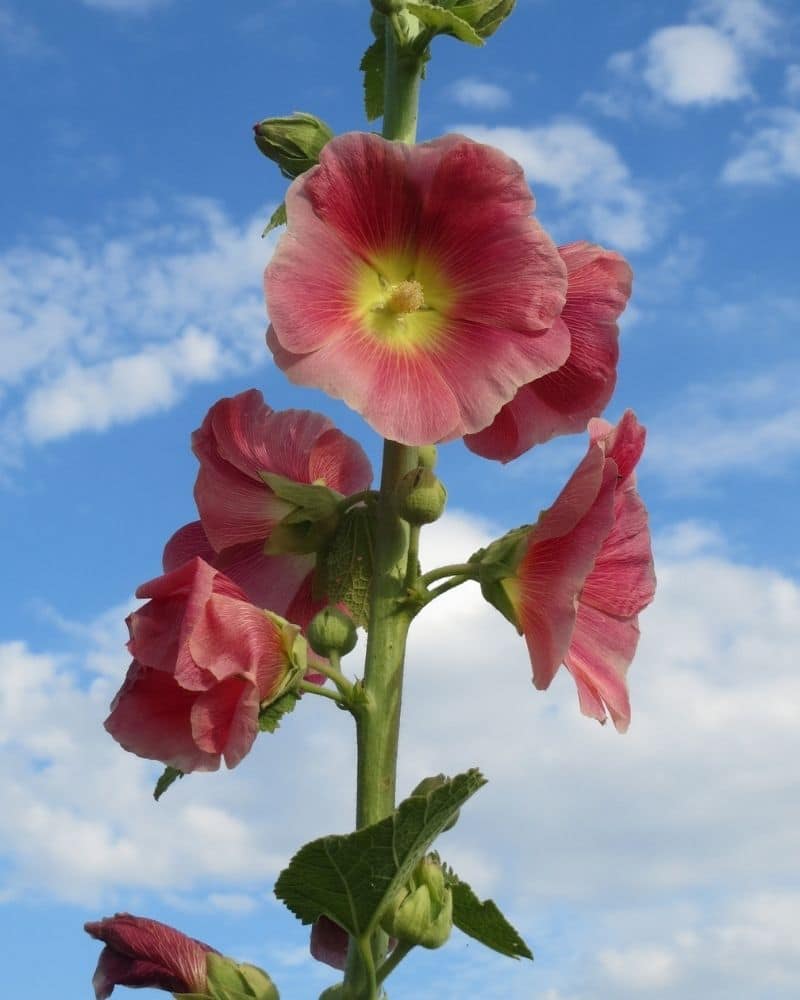
This type of hollyhock is the most common one. This flower will bloom from the end of spring until late summer. They will grow up until 8 feet in height, and they come in yellow, white, pink, purple, and red.
Alcea rosea flowers will reseed themselves every year, which is great news for pollinators who come after their nectar year after year.
Chater’s Double
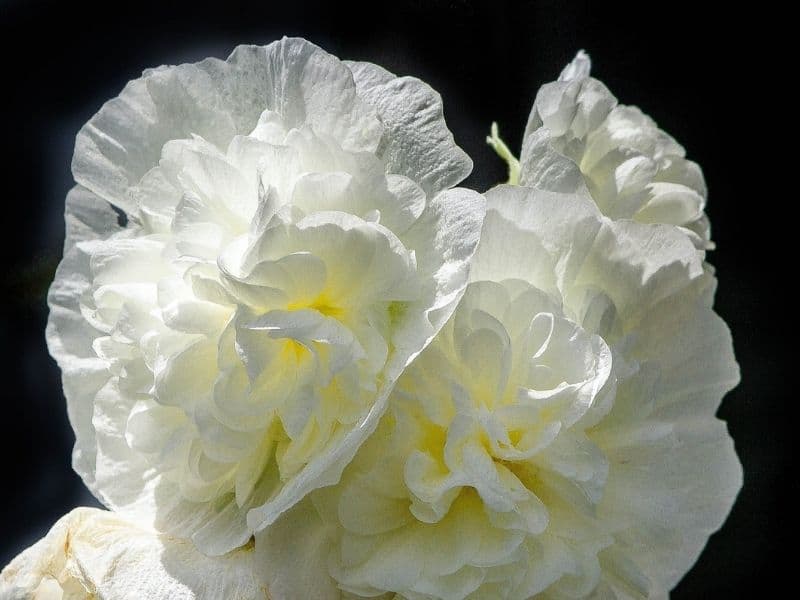
These hollyhocks are versatile! They come in red, white, dark purple, and pink. They are very romantic as well and will look great if placed at the back, behind other colorful and shorter flowers.
As its name suggests, all double hollyhocks have double flowers that are very frilly. The most important aspect is that they will self-seed during consequent years, and they will do so for at least another three years.
Icicle
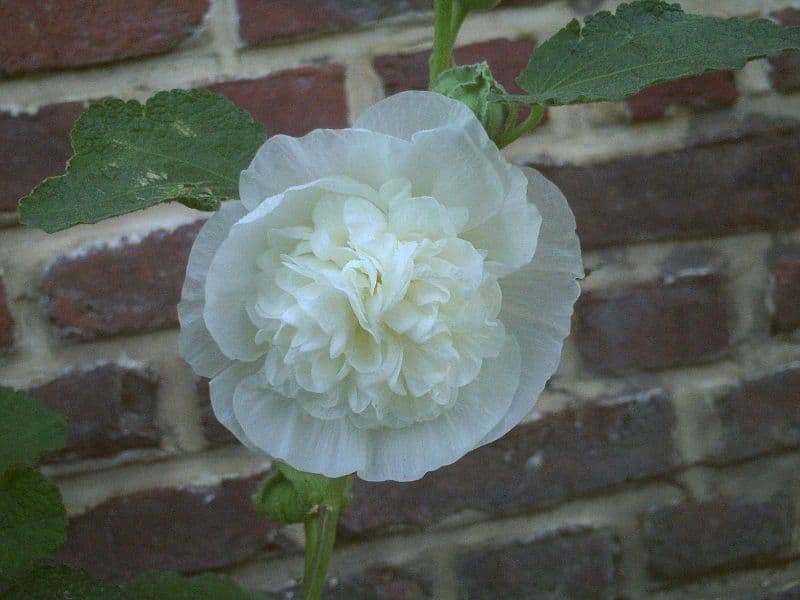
This doubled-petal flower has striking white flowers that will make any garden look incredible! They will grow up to 5 feet tall and are slightly scented.
Halo Blush
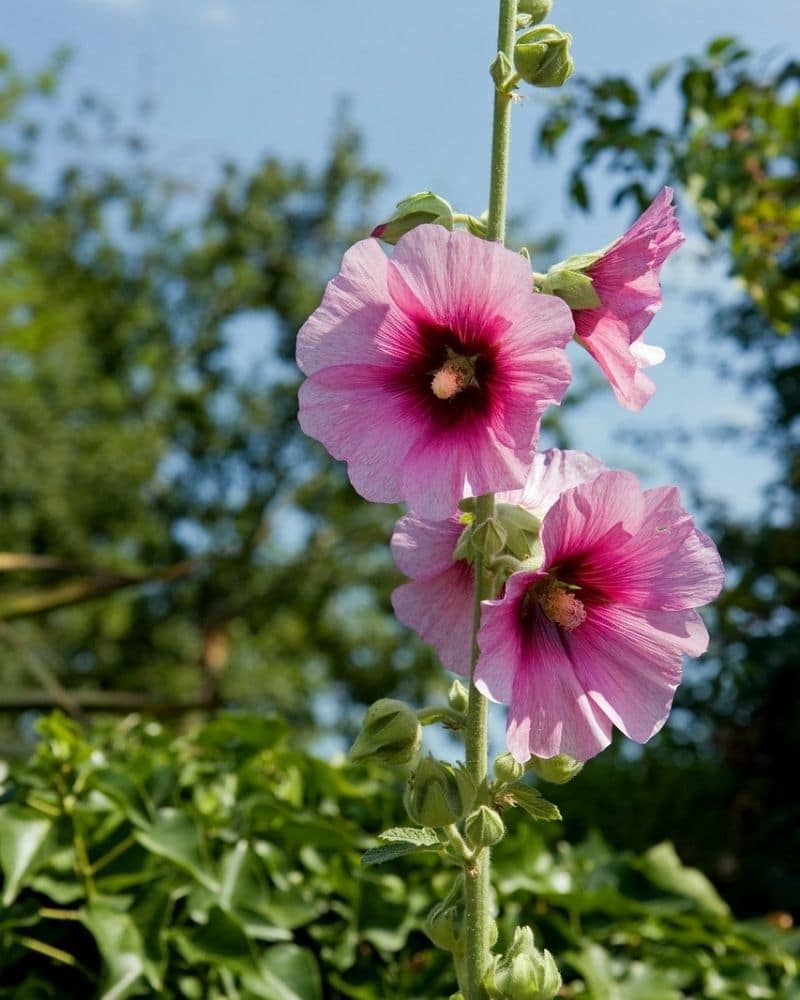
As its name suggests, this variety of hollyhock has a strong fuchsia halo right at the center of the flower. These flowers are either pink, yellow, or white.
Peaches and Dreams
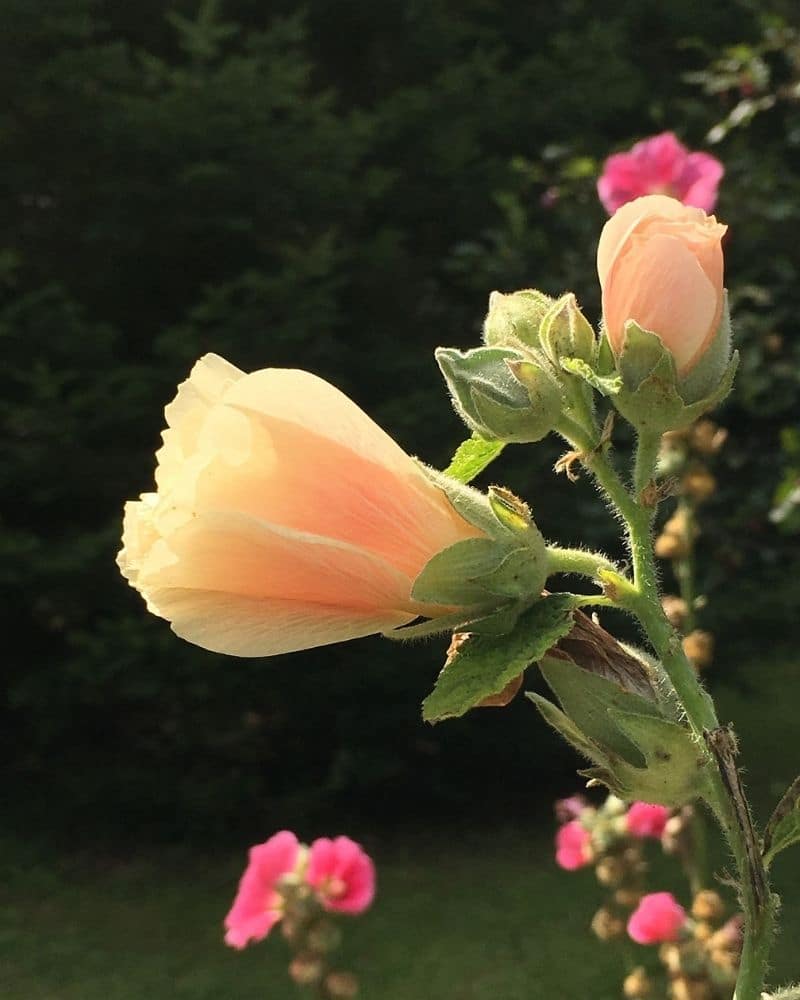
The peach variety sometimes has double petals. They are not as common as other types of hollyhocks, and this makes them extra special!
Blacknight
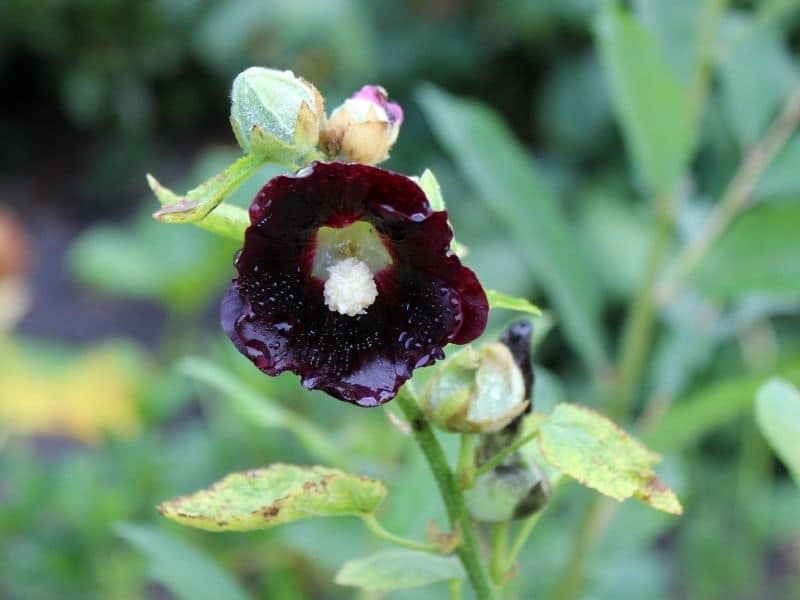
These are the darkest types of hollyhocks in nature! They will look elegant in any garden. Although its name suggests the color of this flower to be black, in reality, it is a very dark purple.
Majorette Mix
This is a dwarf hollyhocks’ variety. Their size is an advantage because this means they will usually bloom within the first year of sowing. The Majorette mix comes in orange, pink, yellow, white, or red. They will only grow up to 2 feet tall, and sometimes they will have double petals as well.
Crème De Cassis
This stunning hollyhock will sure catch everyone’s attention! They have two-colored petals, which are usually pink and white, pink and yellow, purple and white, or purple and yellow. They will grow up to 4 feet in height.
Scarlet
The Scarlet hollyhock has dark-colored petals. They can grow up to 5 feet in height, and they will grow even in the most difficult place, as they tend to create vines that allow them to make their own path.
FAQs
Here are some of the most asked questions about hollyhocks:
Where do hollyhocks grow best?
Hollyhocks grow best in full sun and well drained soil. They thrive in locations with plenty of sunlight and can tolerate a range of soil types, including sandy or clay soils.
Do hollyhocks like direct sun?
Yes, hollyhocks prefer direct sun and typically require at least 6-8 hours of sunlight per day to thrive. Planting them in a sunny spot will help promote healthy growth and prolific flowering.
How long do hollyhocks last?
Hollyhocks are biennial or short-lived perennial plants, meaning they can last for two years or more under optimal conditions. However, individual hollyhock flowers may bloom for several weeks to a few months during their flowering season.
Is Hollyhocks easy to grow?
Yes, Hollyhocks are generally easy to grow, making them popular choices for gardens and landscapes. They are resilient plants that can tolerate a range of growing conditions, including poor soil and dry spells. With proper care and maintenance, they can thrive and produce beautiful blooms.
Do Hollyhocks bloom continuously?
Yes, Hollyhocks typically bloom continuously throughout their flowering season, which can last for several weeks to a few months, depending on the climate and growing conditions. Deadheading spent flowers can help promote continuous blooming and prevent self-seeding, allowing the plant to focus its energy on producing new flowers.
Conclusion
Hollyhocks are one of those flowers that everybody loves! Not only are they pretty to see, but they can provide shade as well, especially if they are left unattended and have formed vines.
In addition, hollyhocks are good for the garden and the environment, as they also welcome many pollinators that need the flower’s nectar to survive.
Hollyhocks are great for making a flower screen, especially when there are places that need a ‘’natural curtain’’ or screen. This type of flower is very easy to maintain once you get the hack of it, and they will resist even the hardest of climate conditions!
Don’t forget to explore our blog for more flowers you can plant.
Up next: Hollyhock Flower Meaning and Symbolism
*Image by aimful/depositphotos







